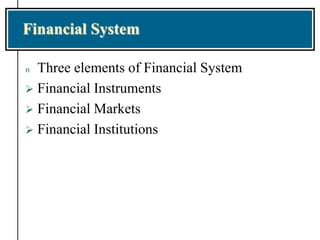The document discusses three key elements of any financial system: financial instruments, financial markets, and financial institutions. It provides an overview of different types of financial markets, how they function, and how various financial assets are traded within these markets. The roles of financial institutions and how they facilitate activities in financial markets are also summarized.




















